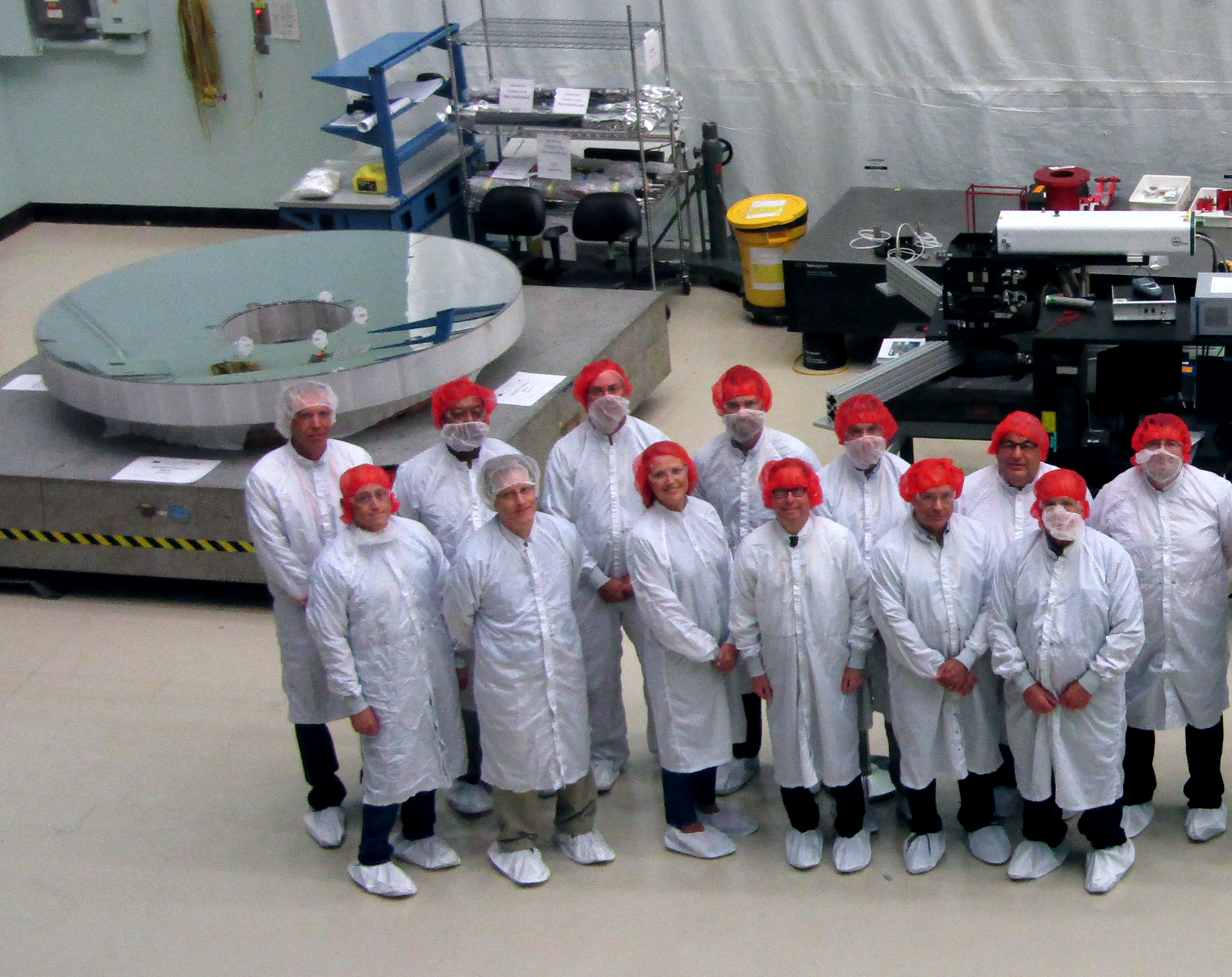Editor’s note, Sept. 23, 2020: The Wide Field Infrared Survey Telescope (WFIRST) was officially renamed the Nancy Grace Roman Space Telescope on May 20, 2020.
On schedule to launch in the mid-2020s, NASA’s Wide Field Infrared Survey Telescope (WFIRST) mission will help uncover some of the biggest mysteries in the cosmos. The state-of-the-art telescope on the WFIRST spacecraft will play a significant role in this, providing the largest picture of the universe ever seen with the same depth and precision as the Hubble Space Telescope.
The telescope for WFIRST has successfully passed its preliminary design review, a major milestone for the mission. This means the telescope has met the performance, schedule, and budget requirements to advance to the next stage of development, where the team will finalize its design.
“It is an honor to work with such a dedicated and talented development team. Each individual has helped ensure the telescope is technically sound, safe, and capable of carrying out compelling science,” said Scott Smith, WFIRST telescope manager at NASA’s Goddard Space Flight Center in Greenbelt, Maryland. “It’s exciting to picture our new telescope out in space, exploring the universe, and we look forward to pushing the boundaries of human knowledge.”
WFIRST is leveraging existing hardware that was transferred to NASA, and the development is much further along at this point than it would be if the telescope had originated with WFIRST. While many of the inherited components are being modified or reconfigured to function as part of the final design, the telescope is already at a very advanced stage of design.
WFIRST is a high-precision survey mission that will advance our understanding of fundamental physics. WFIRST is similar to other space telescopes, like Spitzer and the James Webb Space Telescope, in that it will detect infrared light, which is invisible to human eyes. Earth’s atmosphere absorbs infrared light, which presents challenges for observatories on the ground. WFIRST has the advantage of flying in space, above the atmosphere.
The WFIRST telescope will collect and focus light using a primary mirror that is 2.4 meters in diameter. While it’s the same size as the Hubble Space Telescope’s main mirror, it is only one-fourth the weight, showcasing an impressive improvement in telescope technology.
The mirror gathers light and sends it on to a pair of science instruments. The spacecraft’s giant camera, the Wide Field Instrument (WFI), will enable astronomers to map the presence of mysterious dark matter, which is known only through its gravitational effects on normal matter. The WFI will also help scientists investigate the equally mysterious “dark energy,” which causes the universe’s expansion to accelerate. Whatever its nature, dark energy may hold the key to understanding the fate of the cosmos.
In addition, the WFI will survey our own galaxy to further our understanding of what planets orbit other stars, using the telescope’s ability to sense both smaller planets and more distant planets than any survey before (planets orbiting stars beyond our Sun are called “exoplanets“). This survey will help determine whether our solar system is common, unusual, or nearly unique in the galaxy. The WFI will have the same resolution as Hubble, yet has a field of view that is 100 times greater, combining excellent image quality with the power to conduct large surveys that would take Hubble hundreds of years to complete.
WFIRST’s Coronagraph Instrument (CGI) will directly image exoplanets by blocking out the light of their host stars. To date, astronomers have directly imaged only a small fraction of exoplanets, so WFIRST’s advanced techniques will expand our inventory and enable us to learn more about them. Results from the CGI will provide the first opportunity to observe and characterize exoplanets similar to those in our solar system, located between three and 10 times Earth’s distance from the Sun, or from about midway to Jupiter to about the distance of Saturn in our solar system. Studying the physical properties of exoplanets that are more similar to Earth will take us a step closer to discovering habitable planets.
“The science enabled by our telescope is extraordinary,” said Goddard’s Jeff Kruk, the WFIRST project scientist. “We are asking, ‘what is the fate of the universe?’ by looking at how the expansion of the universe is accelerating, and we are asking, ‘are we alone?’ by looking for exoplanets in neighboring planetary systems.”
“WFIRST will set out to address lofty questions and it is amazing to see our team come together with a robust technical solution to explore them,” said Smith. “I am grateful for all of our partners across the country that have contributed to mature this development, and I look forward to our future investigations in space with NASA’s next flagship mission.”
The team at Harris Corporation in Rochester, New York, the prime contractor for the telescope, is making significant strides in modifying the preexisting hardware for the spacecraft.
“Both mirrors are actively being shaped to the unique optical requirements of the telescope,” said Bill Gattle, president of Space Systems for L3Harris Technologies (Harris Corporation merged with L3 Technologies in July). “We’re very excited to be contributing to this world-class observatory and the groundbreaking science it will deliver.”
By Ashley Balzer
NASA Goddard Space Flight Center




























